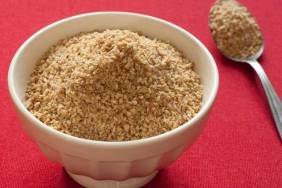You may want to think twice the next time you reach into your wallet to pay extra for that free-range chicken or your box of natural chocolate chip cookies. Odds are you’re not getting what you think you are. “Our packaged foods are adorned with label lingo that is, at best, utterly confusing,” explains certified chef, nutritionist and author of What the Fork Are You Eating? Stefanie Sacks, MS, CNS, CDN. So, how do you decode the “flash” to determine if your product is all that it claims to be? “While the FDA or USDA defines most of these terms, they aren’t regulated by our government. Thus, food companies get to determine the language that will sell more, consequently putting your health at the bottom of the totem pole.”
Here is a look at some of the most deceiving words.
Natural
Defined by the FDA as minimally processed and without artificial ingredients, “natural” is the most overused term in the food industry today. So when you see “natural,” know that it really means nothing.
Cage-Free/Free-Range
Don’t for a second think that your food adorned with this label involve animals that are truly free to roam anywhere other than a cramped warehouse filled with too many birds to count. Unless verified by a third party like Animal Welfare Approved or Certified Humane (even USDA Organic), know that your animals were most likely confined.
Antibiotic-Free and Hormone-Free
Yes, the USDA defines these terms, but does not regulate them. Only trust it if you see third party verification with USDA Organic, Certified Naturally Grown, Animal Welfare Approved or Certified Humane.
Humanely Raised
For the highest animal welfare, you must buy foods with third party verification through Animal Welfare Approved or Certified Humane. As 97 percent of all animal edibles come from confined animal feeding operations, you can pretty much guarantee that your animal was not humanely raised unless verified as noted.
Nitrate-Free/Nitrite-Free
These chemicals have been used in “lunch meat” preservation for years. They have been linked to cancer, so many companies are opting out of using them in processed meats. But do note that they are being replaced with naturally occurring nitrates and nitrites in the form of celery powder. Go “free” for sure, but always moderate consumption.
GMO-Free
Genetically Modified Organisms (GMO) are everywhere in the food supply as so many ingredients in processed food are derived from GMO corn, soy, canola, sugar beets and cotton (cottonseed oil). The best way to feel confident that your food is GMO-free is to buy USDA Organic or find items with the Non-GMO Project verification.
Whole Grain
Unless you see the Whole Grains Council stamp, surely question any product that boasts “whole grain.” When buying breads and any other grain-based foods, be sure that your ingredient label says “100% whole wheat flour” and lists other grains, such as oats, spelt, barley and kamut. Oh, and just because a cookie has this stamp, don’t presume that it is supercharged for health support. It is still a cookie!
Low-Fat (Reduced Fat)
Products that boast these terms are dead giveaways for sugar-laden foods. Salad dressings are the top contenders here. Know that the fat is replaced with sugar (and fillers) and too much sugar leads to fat deposition. In the end, you are better off just eating healthy fat and feeling satiated!
Sugar-Free
This term is everywhere, so understand that sugar-free means that your food is still sweetened, but most likely with artificial sweeteners like stevia or a sugar alcohol like sorbitol. There is plenty of science around these days to question the safety of most of these fakers. So, pick and choose wisely. Or better yet, aim for a little real cane sugar.







